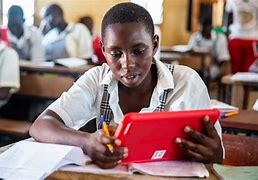APA-Johannesburg (South Africa) Digital technology and connectivity have the potential to unlock the true potential of Africa’s young people by improving the quality and accessibility of education in the continent.
This was the main finding of a new research paper published by Vodacom Group, Vodafone, Safaricom and the Nelson Mandela Foundation on Friday, which explored how digital technologies could help transform education in sub-Saharan Africa.
The paper analysed the current state of education in the continent and identified the key challenges and opportunities for digital innovation.
It argued that while access to education has increased significantly in the last 50-60 years, the quality of education remained low and uneven across countries and regions.
According to the paper, digital technologies and connectivity could address some of these challenges by providing cost-effective and scalable solutions that would enhance learning outcomes, increase teacher capacity, reach remote and rural communities, and empower learners with digital skills.
“We have witnessed this first-hand via our ecosystem of education projects and initiatives, which seek to provide access to quality educational assets, support remote learning and seek to enhance the overall educational experience for teachers and learners in some of Africa’s most under-resourced communities,” Vodacom chief executive Shameel Joosub said.
The paper showcases some of the successful initiatives that have been implemented by Vodacom Group, Vodafone, Safaricom and their partners to leverage digital technologies for education in sub-Saharan Africa.
These include the Vodacom e-School, a free online platform that provides access to quality education for primary and high school students (Grade R to 12) in South Africa.
The platform offers digital learning materials such as interactive textbooks, multimedia content and assessments, as well as other educational resources and support services and is available free of charge to Vodacom customers on their mobile and desktop devices.
Vodafone operates the Instant Schools programme, another free online platform that provides its customers with free access to digital learning materials to primary and secondary school students in Ghana, Kenya, Lesotho, Mozambique and Tanzania.
The platform offers materials such as interactive textbooks, videos and quizzes, as well as other educational resources and support services and is available on any device with an internet connection, free of charge.
The Safaricom-operated DigiSchool is a digital classroom solution that provides access to quality education for primary school students in Kenya.
It consists of a solar-powered device that connects to a projector and a speaker, and delivers digital learning materials to a large group of students. The solution also provides teacher training and support services.
The paper noted that digital technologies and connectivity hold the key to unlocking the true potential of Africa’s young people by improving their educational opportunities and outcomes.
However, it also stresses that these technologies are not a panacea for challenges faced by Africa’s education sector and that they need to be accompanied by supportive policies, regulations, infrastructure, funding, capacity building and stakeholder collaboration.
Jonathan Jansen, one of the authors of the research paper, said the roll out of the e-education projects across Africa is hindered by challenges ranging from “lack of reliable electricity, limited technical support and lacklustre Internet access to language barriers, political instability and restrictive social norms.”
“Each of these hurdles can be overcome through the right partnerships, interventions and ecosystems,” Jansen said.
He called for a collective effort involving governments, private sector, civil society, academia and development partners to create an enabling environment for digital innovation in education in sub-Saharan Africa.
“Importantly, addressing these obstacles demands political buy-in and support from governments to ensure that the mechanisms put in place are appropriate in that they meet African learners and educators where they are.”
JN/APA


